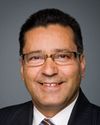First of all, I want to thank Dr. Urbain for mentioning and insisting, at the committee level, that the organization that represents radiology, the CAR, be a representative too. I think he's done a lot by encouraging the government to do that, and now we are sitting at the table.
I have one comment, if possible. It was mentioned that there is a loss of leadership role by Canada by virtue of the lack of available isotopes. I would suggest that utilization of the isotope is one facet of this issue; the other facet is how the patients get into the system, and are they always choosing the best test first?
In fact, Canada today has a recognized leadership role in the use of guidelines to help the physicians—the specialists or the physicians—to identify the best tests. And maybe we also have to look at this facet to make sure that not all of the people who are getting in need to get in--and similarly, that those who really do need to get in will get in first.





